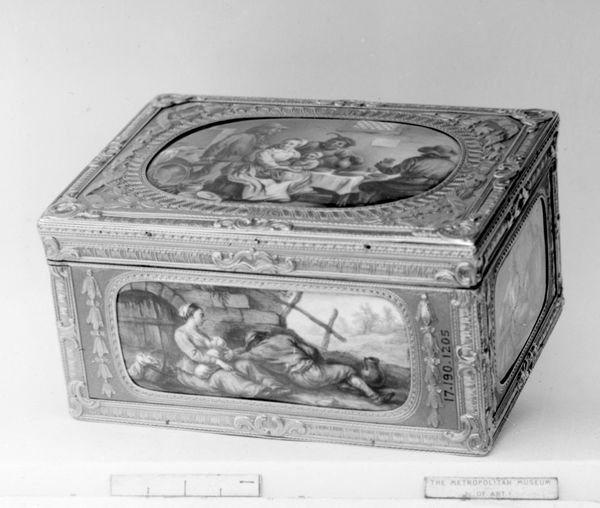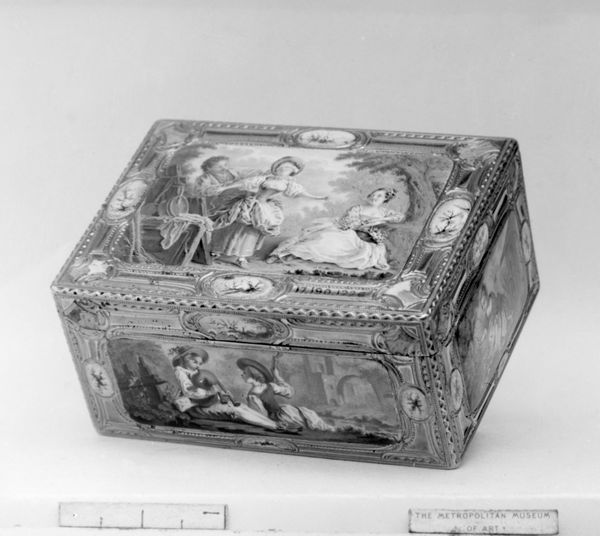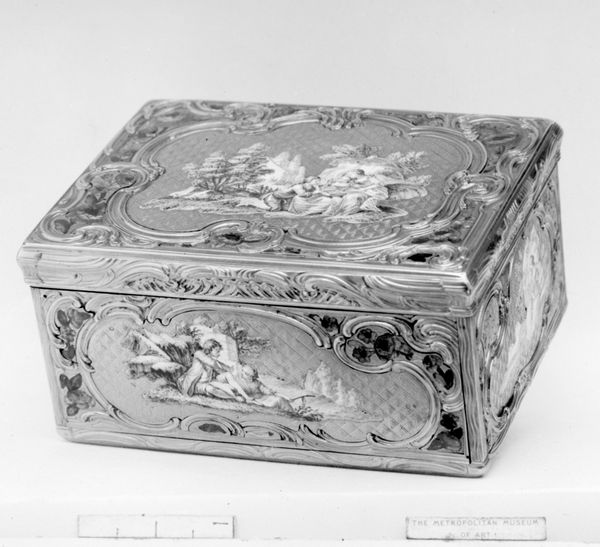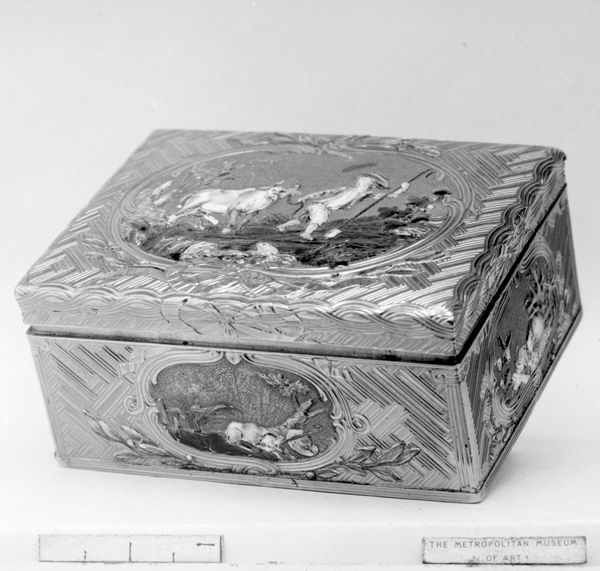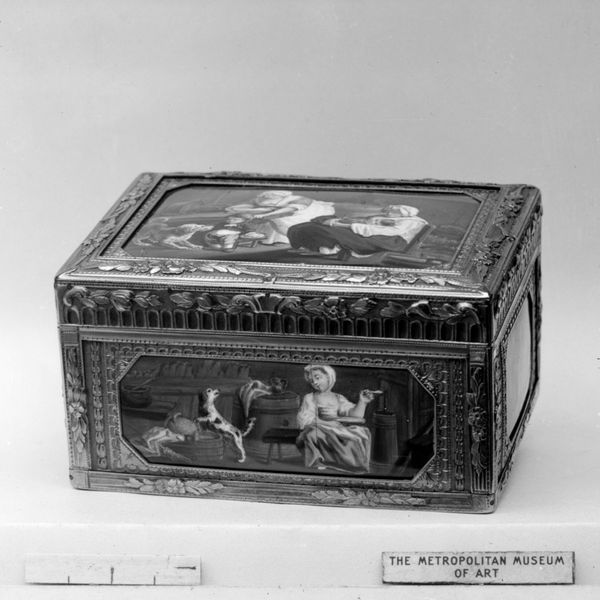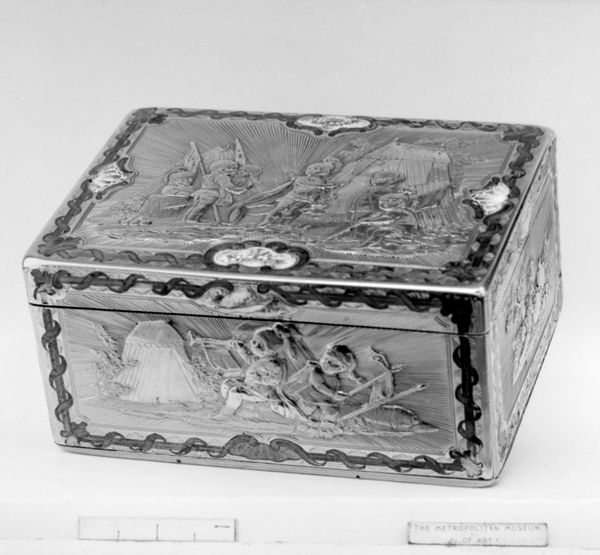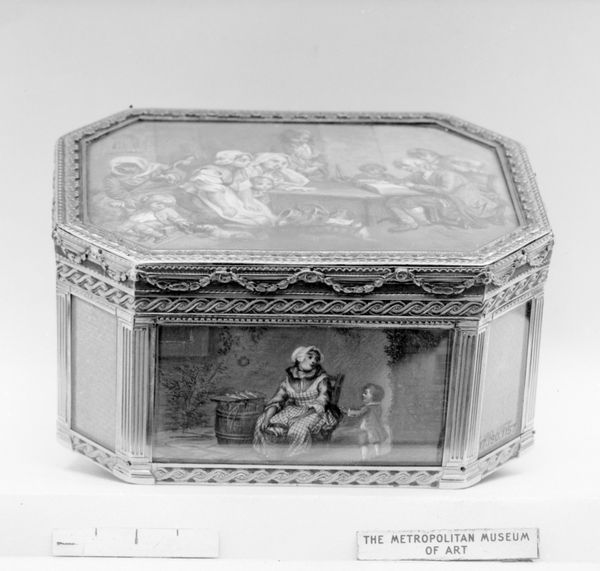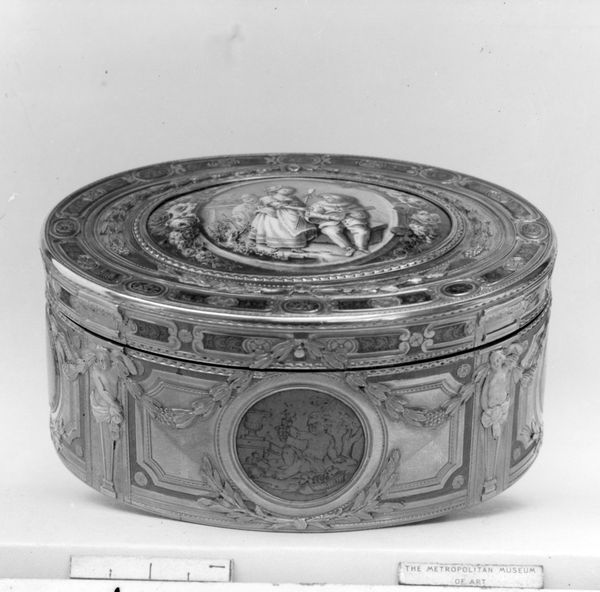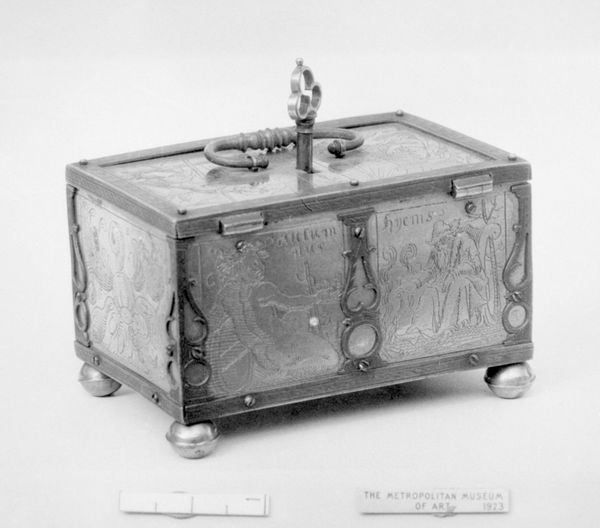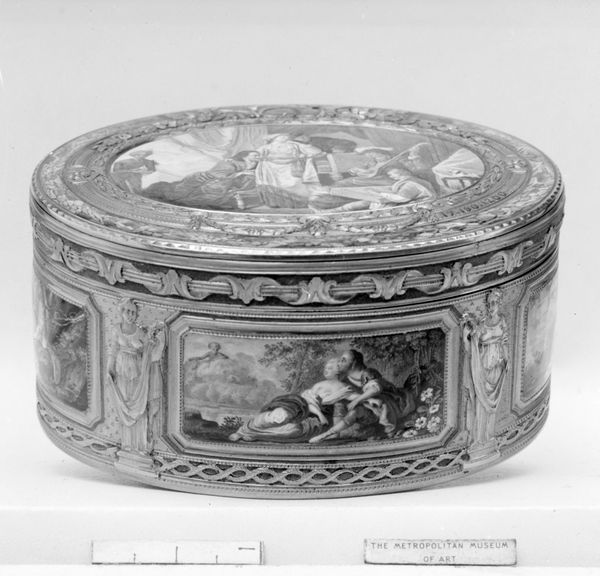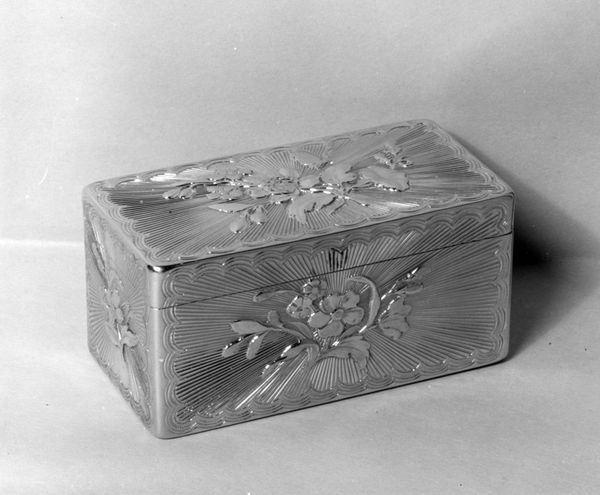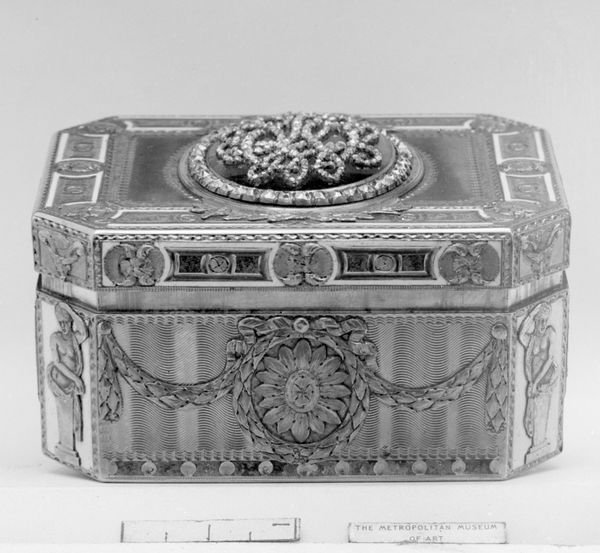
painting, sculpture
#
portrait
#
animal
#
painting
#
sculpture
#
landscape
#
child
#
sculpture
#
men
#
decorative-art
#
miniature
#
rococo
Dimensions: 2 3/4 x 2 1/8 in. (7 x 5.4cm)
Copyright: Public Domain
Curator: The piece before us is a French snuffbox, created by Jean Marie Tiron, also known as Tiron de Nanteuil, sometime between 1757 and 1767. Currently, it resides here at the Metropolitan Museum of Art. Editor: It’s utterly charming! The scale emphasizes delicacy. There's a captivating contrast between the seemingly industrial, rigid structure of the box itself and the dreamlike scenes painted on its surfaces. Curator: Indeed! The Rococo style is evident in those painted vignettes. Note the themes: scenes of playful pastoral encounters. Such images echoed in many decorative pieces held cultural memory, a gentle fantasy life among elite society. Editor: But beyond the idyllic imagery, I’m drawn to the craftsmanship involved. Think of the different hands, skills, and probably even divisions of labor it would take to forge the box, apply those intricate decorations around the borders, and then render the enamel paintings on each face. Curator: The choice of imagery elevates the practical item to a symbol. This snuffbox served not just as a container but as a cultural marker—a statement piece, reflecting the owner's appreciation for beauty, refinement, and perhaps even a particular philosophy of leisure and pleasure. Consider also how pocket-sized mythological scenes carry symbolic weight. Editor: Exactly, the entire piece becomes a container—not only for tobacco but also for ideas about wealth and status. A constant, material performance of the values of a distinct social class. The landscapes also evoke ideas about the accessibility and experience of leisure, both for those depicted and the owner of the box. Curator: Even the act of taking snuff became a ritual, further emphasizing these ideas through a physical and sensory experience. Snuff became less about the substance itself and more about a sophisticated custom, expressed via beautifully constructed vessels. Editor: It underscores how everyday objects can be deeply embedded with ideology. Analyzing its design, we start to question the processes through which certain artistic materials, even certain subject matters, gained status. Curator: A perfect example of how something small can contain worlds. Editor: Exactly! Worlds made, shaped, bought, and sold.
Comments
No comments
Be the first to comment and join the conversation on the ultimate creative platform.
